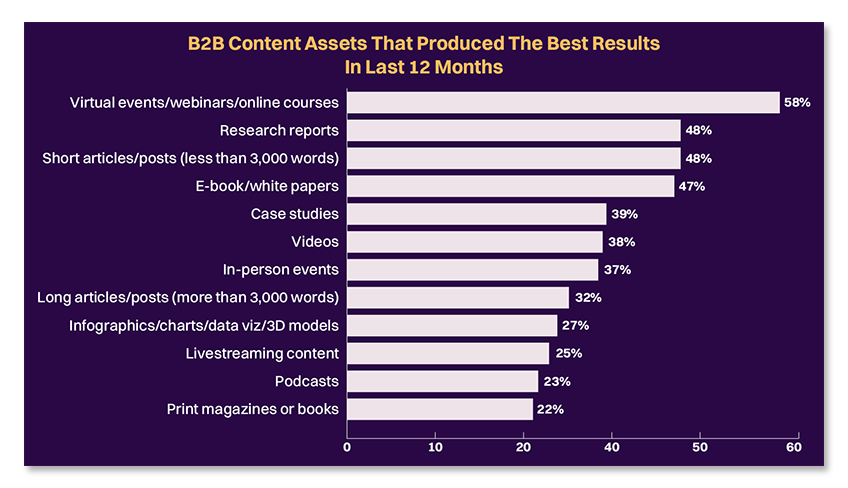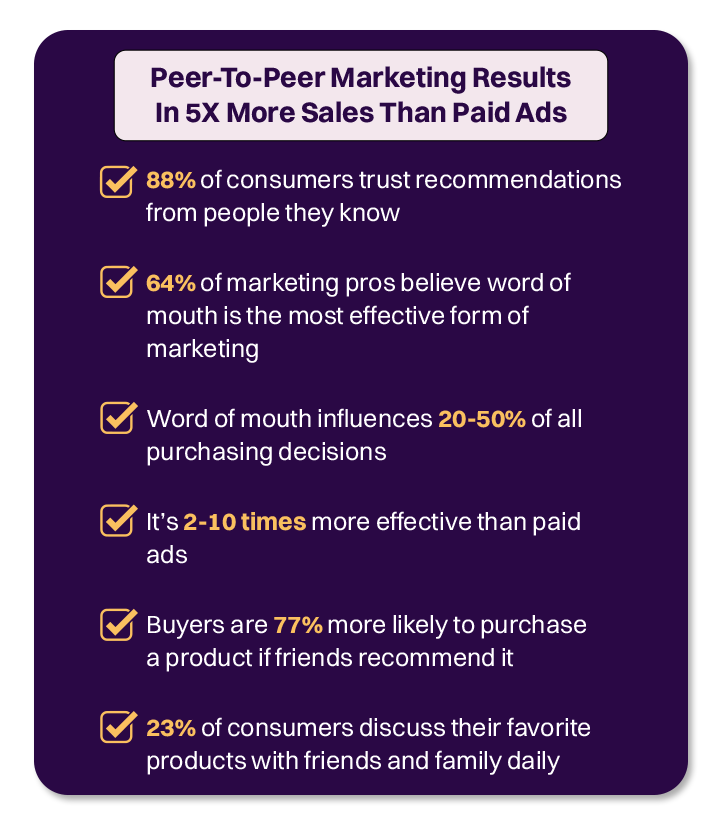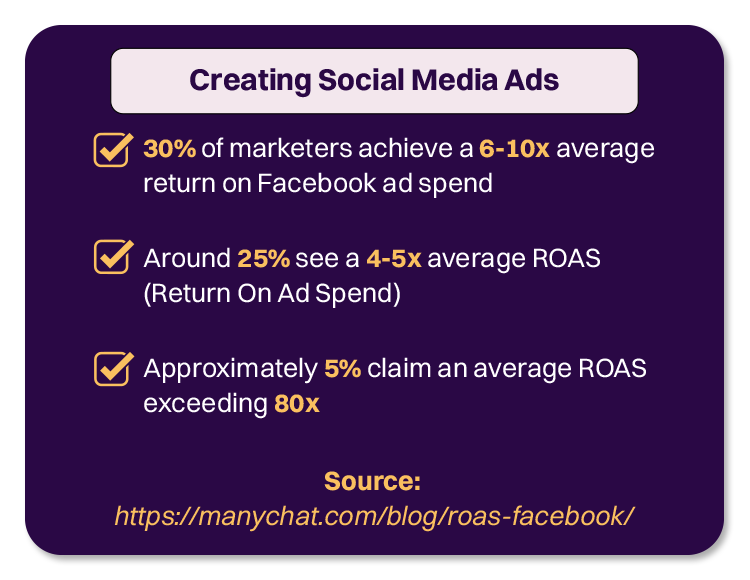
What Are the 20 Best Lead Generation Tactics for Higher Education Businesses?
The higher education landscape is highly crowded and competitive – with the global market size of ed-tech projected to reach $232.9 billion by 2027.
Hence, establishing yourself as a leader in this packed sector is both critical and complicated.
As such, higher education B2B businesses like yours MUST connect with the right decision-makers to stand out.
Plus, you may have a multitude of services to offer. These solutions can range from educational classes to career planning and administration software.
As such, you need comprehensive strategies for higher education lead generation. Why? To ensure your solutions reach those who need them the most. Thus, you should focus on the following aspects:
- Intent-focused leads
- Customized and verified prospects
- Reaching decision-makers directly
- Influencing potential customers
However, connecting with education industry decision-makers can be challenging. Why? Establishing connections with highly reputed institutions takes time and effort.
That's where an end-to-end lead generation strategy becomes crucial. Implementing a well-designed plan across your sales funnel helps you attract and convert premium leads. And that too – efficiently and cost-effectively!
So, to help you out, let’s explore the 20 best lead generation tactics. Each of these strategies is specifically tailored to the unique requirements of higher education B2B businesses.
Learn More: Inbound marketing for education: Go-to guide
20 Lead Generation Tactics for Higher Education Companies
In the following sections, you’ll find that we’ve segmented our lead generation tactics into three phases -
- Demand Creation
- Demand Capture
- Demand Management
We’ve done it to provide a strategic framework to streamline your lead generation strategy.
By understanding the purpose and benefits of each phase, you can optimize your efforts. Hence, you will be in a better position to achieve success in attracting, converting, and managing leads. So, let’s get started!
A. Demand Creation
In the Demand Creation phase, you should focus on generating awareness and interest among your target audience. Let’s explore some tried-and-tested tips in this stage:
1. Finding University Suppliers
First up, identify and connect with the targeted institutions that fall under your education sales leads management’s radar. Such entities may include:
- Universities
- Schools
- Tuition providers
- Test and exam centers
- Professional educational bodies
- Other educational institutions
When you target the above, you create awareness about your educational solutions. In addition, you generate interest among potential leads. Hence, you can build a pipeline of prospects and create demand for your offerings.
2. Contacting Decision-Makers
Next, engage directly with your targeted institute’s key stakeholders and decision-makers. It will significantly increase your chances of success. Therefore, secure meetings with the following:
- Educational directors
- Deans
- Chief executive officers (CEOs)
- Other influential individuals
As such, you can pitch your solutions, address any concerns or questions, and build a personal connection. This direct interaction lets you achieve the following goals:
- Better understand their needs
- Tailor your offerings
- Establish a solid foundation for long-term partnerships
3. Holding Virtual Events
Another result-oriented strategy is hosting or participating in virtual events. It allows you to connect with a broader audience and generate valuable leads. In fact,
- Virtual events, webinars, and online courses offer 58% of B2B marketers the best results in their content marketing efforts.

- Plus, around 50% of firms host between 20 and 30 events annually.
- Another 21% hold over 30 virtual events annually.
Again, virtual events offer online platforms for showcasing:
- Engaging presentations
- Interactive sessions
- Networking potential
Hence, you can demonstrate your expertise and capture the interest of potential customers. For instance, suppose you have SMEs having knowledge of emerging ed-tech trends. You can then host a virtual conference or webinar series focused on the same.
In addition, invite industry experts as speakers for your event. And don't forget to promote it across all your relevant channels. Also, in your session, provide valuable insights and networking opportunities.
As such, you can easily attract your targeted audience. Finally, during the session, never miss out on collecting contact information for follow-ups later.
4. Attending Community Events
Engaging with educational communities and attending relevant events can be an excellent lead generation tactic. Attending conferences, seminars, and workshops lets you connect with relevant decision-makers.
In addition, you can achieve the following:
- Establish relationships
- Build credibility
- Generate qualified leads
Here are the steps to sponsor or exhibit at an education industry conference or trade show.
- Set up an engaging booth
- Offer product demonstrations
- Collect contact information from interested attendees
- Engage in meaningful conversations
- Follow up promptly after the event to nurture those leads further
5. Designing Gated Resources
Create valuable content and gate it behind a form. Develop e-books, whitepapers, case studies, or research reports – that address pain points or provide solutions in the education industry.
In fact, 76% of buyers are willing to provide their contact information in exchange for relevant content. As such, offering high-quality educational resources can help you attract leads genuinely interested in your offerings.
6. Creating Email Marketing Campaigns
Email marketing remains a powerful tool for lead generation, especially when tailored to individual recipients.
In fact, personalized emails have a 29% higher open rate and a 41% higher click-through rate than generic emails.
You can deliver targeted and relevant content that resonates with your audience by segmenting your email list based on specific criteria such as:
- Job roles
- Interests
- Previous interactions
For example, you can share custom email newsletters with decision-makers in educational institutions, addressing their pain points and offering tailored solutions.
Plus, use dynamic content to include relevant case studies, testimonials, or product recommendations based on the recipient's profile. Personalizing the messaging and providing value can increase engagement and drive lead conversions.
7. Focusing on Peer-to-Peer Marketing
In the higher education space, satisfied clients, educators, or administrators can become advocates for your products or services. Encourage them to share their positive experiences through testimonials, case studies, or word-of-mouth referrals.
In fact, peer recommendations are among the best demand capture strategies. Here are some numbers to support our claims:

8. Having In-depth SEO Strategies
Search engine optimization (SEO) is key to attracting organic traffic to your website and generating those much-required leads. Therefore, we recommend you follow the below-mentioned steps to increase your SEO:
- Conduct thorough keyword research: It will help you identify your target audience's most-used terms and phrases when searching for educational solutions.
- Optimize your website content with relevant keywords: In this phase, include blog posts, landing pages, and product descriptions. It’ll improve your visibility on search engine results pages.
9. Prioritizing Video Marketing
Video has become a dominant form of content consumption. It’s an effective lead generation tactic for higher education B2B companies.
As such, create engaging and informative videos that:
- Showcase your educational technology solutions
- Highlight their benefits
- Provide tutorials or demonstrations
Here’s an illustration of how you can use a video marketing campaign to showcase your educational solutions:
| Elements | Description |
| Campaign Objective | Increase awareness and generate leads for your solution. |
| Video Content | Engaging explainer videos showcasing the features and benefits of your product/service. |
| Target Audience | K-12 schools, colleges, and educational institutions seeking innovative learning solutions. |
| Distribution Channels | Website, social media platforms (Facebook, YouTube, LinkedIn), and email marketing. |
| Call-to-Action (CTA) | Encourage viewers to sign up for a free trial or request a solution demo. |
| Performance Metrics | Video views, click-through rates (CTRs), conversion rates, and lead generation. |
| Optimization Tactics | A/B testing video thumbnails, optimizing video titles and descriptions for search visibility. |
| Lead Nurturing and Follow-up | Engage with leads through personalized email campaigns, offering additional resources and demos. |
| Conversion Tracking | Track conversions from video views to trial sign-ups or demo requests. |
10. Creating Social Media Ads

Social media platforms offer robust targeting options that allow you to reach specific audiences in the higher education industry.
Thus, create compelling ad campaigns on platforms like Facebook, LinkedIn, or Twitter to directly promote your products or services to decision-makers.
Also, customize your ad targeting based on factors such as job titles, educational interests, or institution types.
11. Leveraging Influencer Marketing
Partner with influential individuals or organizations in higher education to promote your products or services.
Identify key influencers such as:
- Education bloggers
- Industry experts
- Renowned educators
– who have a strong following and credibility in the higher educational community.
Collaborate with them to create the following:
- Sponsored content
- Guest blog posts
- Social media endorsements
– to reach a wider audience and gain trust and recognition.
12. Drafting Content Marketing Strategies
Creating valuable and relevant content helps you attract and engage your target audience. As such, you can position your brand as a trusted authority in higher education.
Examples of effective content marketing strategies include:
- Educational Blog Posts: Publish informative blog posts addressing key challenges and providing solutions for educators and administrators.
For instance, an article titled "5 Strategies for Implementing Blended Learning in the Classroom" can offer practical tips and insights.
- Case Studies: Showcase success stories of educational institutions that have benefited from your educational solutions. You can highlight:
- Specific challenges they faced
- How your product addressed those challenges
- Positive outcomes achieved
- Whitepapers: Compose in-depth reports or guides that provide valuable insights, industry trends, and solutions to specific challenges. It positions your brand as an industry thought leader.
- Research Papers: Create detailed studies or analyses that present original research findings or insights. It establishes your brand's credibility and expertise in the educational field.
- Guest Posts: Contribute articles to other industry-related websites or blogs to expand your reach, build credibility, and attract new audiences to your brand.
- Infographics: Design visual representations of data, statistics, or concepts to simplify complex information and engage your audience visually.
- E-books: Post comprehensive resources that delve into specific topics. Offer detailed information, guidance, and solutions to common challenges in the higher education industry.
- Podcasts: Create audio content that offers educational discussions, interviews, or insights about your industry. It lets you connect with your audience in a convenient and engaging format.
- Newsletters: Share regular email updates containing curated content, industry news, product updates, and valuable resources to keep your audience informed and engaged.
B. Demand Capture
Once you have created initial interest and awareness, capturing and converting those leads into tangible opportunities is crucial. Here’s how:
13. Showcasing Customer Success Stories
Share success stories of educational institutions that have benefited from your educational solutions. In fact, this is a powerful way to capture demand. Therefore, highlight real-life examples of how your product has:
- Positively impacted student outcomes
- Streamlined administrative processes
- Improved overall educational experiences
Providing evidence of the value and effectiveness of your solution can instill confidence in prospective buyers and move them toward becoming customers.
14. Demonstrating Social Proof
Utilizing social proof in your marketing efforts can significantly impact demand capture. It can include the following tactics:
- Displaying testimonials
- Highlighting reviews and ratings
- Publishing endorsements
– from satisfied customers or industry experts
Prospective buyers are more likely to trust and engage with your product when they see evidence of its positive impact on others. In fact, 70% of clients trust online consumer opinions.
15. Utilizing Chatbots
Chatbots are automated conversational agents that can interact with website visitors and provide instant support or information. You can program them to:
- Answer frequently asked questions
- Guide users through the lead capture process
- Provide personalized recommendations
Chatbots not only enhance the user experience but also help capture and qualify leads efficiently. For example, a chatbot can engage with potential customers, gather their contact information, and route qualified leads to your sales team.
16. Designing Landing Pages
Landing pages play a crucial role in capturing demand. How? By effectively presenting your solution and enticing visitors to take action. However, while creating landing pages, keep the following elements in mind:
- A well-designed landing page should be focused, concise, and highlight your product's key benefits and features.
- It should also include a clear CTA that encourages visitors to engage further, such as:
- Signing up for a demo
- Requesting more information
- Downloading a resource
NOTE: Optimizing your landing pages for conversion can lead to higher engagement rates and increased demand capture.
17. Leveraging Retargeting Campaigns
Retargeting campaigns allow you to reconnect with potential customers who have previously shown interest in your educational products or services.
Displaying targeted ads to these prospects as they browse other websites or social media platforms can reinforce your brand message and increase the chances of conversion.
Here’s an example of a retargeting ad:
| AD Title | Ad Description | Image | Button |
| "Unlock Your Learning Potential with ABC Education" | "Missed out on our innovative learning solutions? Don't worry, we've got you covered! Enhance your educational experience with ABC Education's personalized learning tools. Rediscover your passion for learning and achieve academic success. Click now to explore our offerings!" | [Engaging Image] | "Learn More" |
18. Collaborating with Higher Ed Portals
Partner with higher education portals or online platforms that cater to the needs of educational institutions. This approach can significantly expand your reach and visibility.
These portals often attract a targeted audience of educators, administrators, or students actively seeking solutions like yours. Collaborating with the can help you:
- Showcase your offerings
- Contribute valuable content
- Participate in industry events
– to generate demand and establish your brand as a trusted resource.
C. Demand Management
Finally, it’s time to effectively manage and nurture your leads throughout their lifecycle. Let’s discuss some of the primary strategies in this phase:
19. Using Google Analytics
Google Analytics is a powerful tool that provides detailed data and analytics about your website's performance. It helps you:
- Understand your audience
- Track user behavior
- Measure the effectiveness of your marketing efforts
For instance, you can analyze metrics like bounce rate, time on page, and conversion rates to identify areas for improvement and optimize your website's user experience.
20. Managing Leads with a CRM
A Customer Relationship Management (CRM) system helps you effectively organize and track your leads throughout the lead generation process. It enables you to:
- Capture and store valuable information about prospects
- Track their interactions with your brand
- Nurture them through personalized communication
With a CRM, you can streamline lead management, prioritize follow-ups, and ensure a systematic approach to converting leads into customers.
Final Word
All of our aforementioned strategies have been jotted down after thorough research. Hence, we can guarantee that you can use them as a launching point for generating premium education leads for your higher education industry. However, if you want to avoid so many in-house tasks, you can partner with an agency specializing in these solutions.
For instance, Revnew is a leading firm that provides you with high-quality leads seamlessly and at a lower cost. Our exclusive leads will multiply your conversion rates, while our one-stop shop keeps you informed at every step.
With over 20 years of industry experience, we ensure handpicked, verified, and high-converting leads tailored to your needs. So, don't miss out on this opportunity. Get started with Revnew today and watch your ROI soar.




